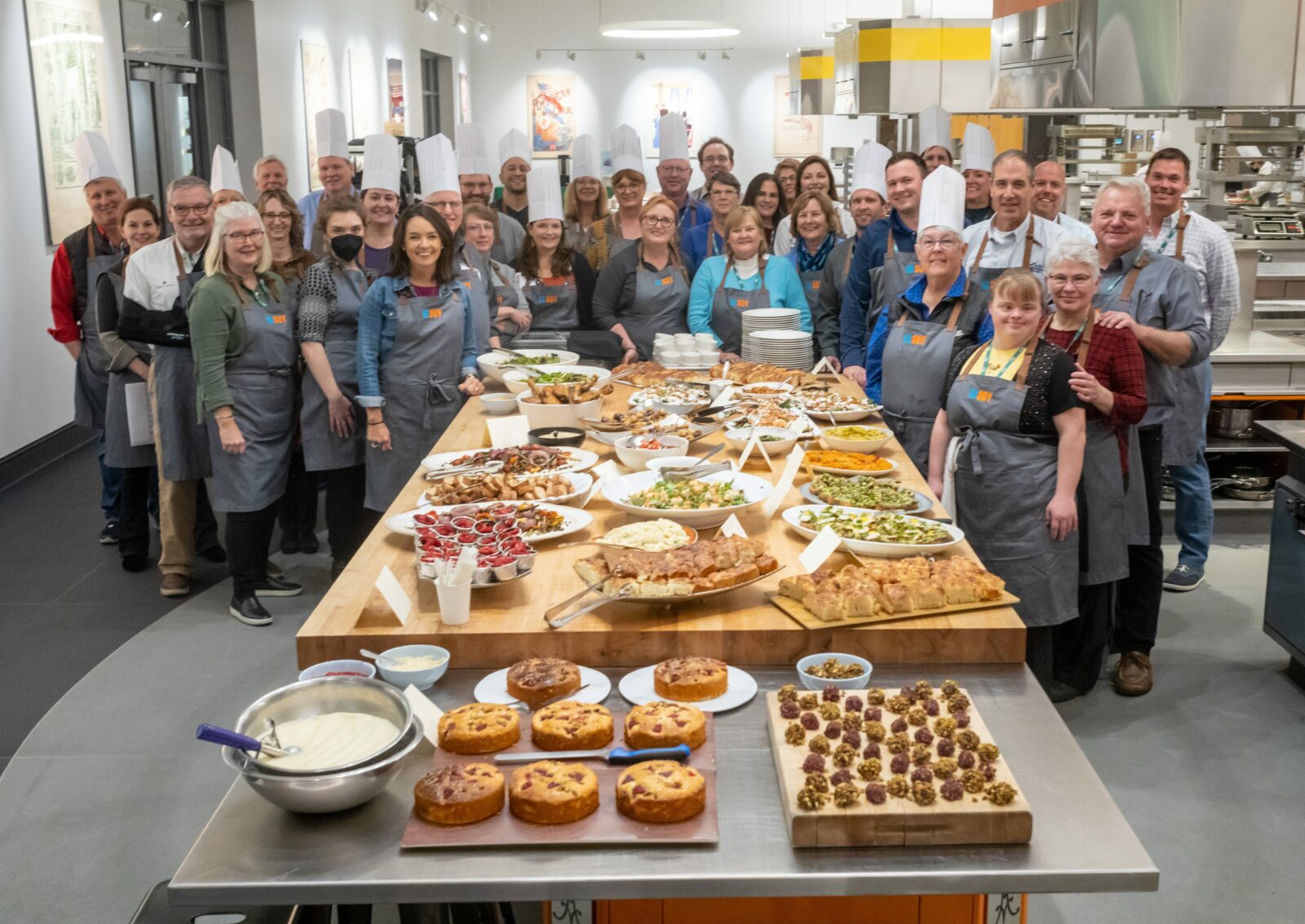U.S. Soy farmers recently had the opportunity to don their aprons and practice their cooking skills at The Culinary Institute of America (CIA) at Copia in Napa, California.
Utilizing high-oleic soybean oil and other soy ingredients, the group prepared a buffet of delicious goodies ranging from chicken confit to ginger snap crème brûlée.
Founded in 1946, the CIA is widely recognized as the world’s premier culinary college. Its mission is to better the nation and the world through outstanding education, practice, and scholarship on all aspects of food and the enterprises related to it. Through a transformative learning experience, the college prepares future food leaders, innovators, and experts for personal and professional success. The private, not-for-profit college offers bachelor’s, and associate degrees with majors in culinary arts, baking & pastry arts, food business management, hospitality management, culinary science, and applied food studies. The CIA’s Food Business School offers master’s degrees in culinary arts, food business, sustainable food systems, and wine and beverage management, as well as executive education and certificate programs.
Notable CIA alumni include Anthony Bourdain, Maneet Chauhan, Cat Cora, Duff Goldman, Kwame Onwuachi, and Geoffrey Zakarian.
From blanching to confits, the farmer leaders and staff prepared the food with chefs from CIA Consulting, a division of the CIA, who educated attendees through an immersive, hands-on cooking workshop.
The farmers, representing growers from around the country, learned how the crops they grow are utilized in kitchens in your neighborhood and around the country. By cooking with ingredients like high oleic soybean oil they gained an intimate knowledge of consumer needs and preferences. That knowledge helps as they drive innovation from the seeds they plant to the thousands of uses for U.S. Soy.
Steve Reinhard, a U.S. Soy farmer from Ohio, dusted off his cooking skills to participate in the evening learning session.
“It was really interesting because it’s just like how we think of the process of raising a crop,” Reinhard says. “Picking a variety is kind of like setting up a menu. Once you get your menu set, it’s executing with the right ingredients and the right methods of cooking to get the taste and flavors you want.”
He added that farmers pick soybean varieties to provide a plan of action for the season. He said every season is a learning experience, and every variety changes the “taste” of a crop when it is harvested.
While the farmers won’t likely be the next top chefs, they did have a great time learning about food uses for the soybeans they grow on their farms.
“It was a full circle moment for farmers at The Culinary Institute of America where they saw some of the food end uses of the very beans they help grow each year,” Mac Marshall, vice president of market intelligence at the United Soybean Board, says.
During the workshop, the U.S. Soy farmers split into five groups to make appetizers, entrees and desserts using soy ingredients and high oleic soybean oil.
Under the watchful eye of CIA instructors and students, the groups crafted avocado and edamame crush on toast with high oleic soy oil popped seeds and sunny-side egg; chicken confit in high oleic soy oil with lentils and tomato garlic confit; and pistachio rose truffles and ginger snap crème brûlée made with high oleic soybean oil, to name a few.
“I was surprised how diversified the menu was using soy,” Reinhard said. “From the salads and dressings to the poultry we were working with, to the bread and the desserts, they all used soybeans or had soybean oil.”
Their time in the kitchen at the CIA bound the fact that soybeans are a great ingredient to cook with. Soybeans are versatile, nutritious, and affordable. And they can be used in various dishes, from savory to sweet.
Based on Food and Agriculture Organization data, the world will need over 660 billion grams of protein for the year. By 2050, that figure could grow to over 800 billion grams of protein. When combined with the diet needs of the future, sources of protein, like soybeans, become very important for human nutrition.
Thankfully, U.S. Soy and its ability to provide soybean meal for animal protein, complete, plant-based protein for human consumption and edible oil for cooking uses allows growers to play a vital role in solving the global food challenges of the future.



